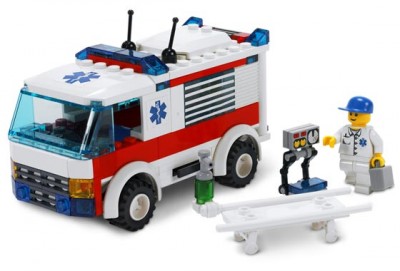You kneel beside Joe and ask, “So, would you like to go to the hospital?”
“No!” he vociferously replies — a theme that will be repeated often over the next few minutes.
You explain the risks — that given his anticoagulation (Coumadin), and given that he struck his head and seemingly lost consciousness, there is a non-trivial possibility of bleeding into or around his brain. That although he feels well now, it’s not impossible for such a problem to develop insidiously and not manifest with symptoms until it’s too late. That you can take him to the hospital of his choice, in total comfort, he can receive some quick tests, and if nothing is wrong he’ll be back home before he knows it.
Joe wants to hear none of this. He just came out of the hospital, enjoyed it not at all, and that was just the latest episode in a long series of hospitalizations. “They ruined my hip” on one occasion, he opines, and he’s already been fooled before by “home before he knows it.” No sir; he’s not going anywhere.
You try, your partner tries, the neighbors try, the proxy tries. No way, no how.
Well, okay. But this is not the sort of incident to just brush aside, and you’re well aware of the risk inherent to patients refusing transport, particularly in a risky circumstances like this. So you pick up your phone and hit your hotkey for medical control.
“Needletown Hospital; this is Dr. Scrubs. How can I help you?”
“Hi doc, this is Maverick from Poketown BLS 48. We’re on scene with a high risk refusal.”
You fill him in with the story. He asks a couple questions, then requests to speak with Joe, and finally talks to the proxy for a few minutes. When the phone gets back to you, Dr. Scrubs informs you that he really thinks Joe needs to go.
Well, okay. You dive back in, bolstered with a physician’s opinion, and attempt to get Joe on board the hospital train. He’s not having it. The whole entourage keeps hammering away at him, but he’s simply not budging.
You call back Dr. Scrubs, bringing him up to speed. “We’re making no headway here. He just doesn’t want to go.”
He asks to speak to Joe, and the sounds of his best MD magic come wafting over the speaker, but Joe just has less and less polite things to say, until finally he comes out with, “You’ll have to handcuff me before I’m going anywhere! And just go ahead and try it!” He hangs up on the doctor.
You call back. “I gotta tell you, doc, I don’t see us convincing this guy. If you tell me that we must take him, then I’ll take him, but I think we’d have to do violence to him and start a battle royale here. Is that what you want?”
Dr. Scrubs replies, “Well, I think he needs to be seen, and it sounds like his proxy does too. I’d like to hear your opinion.”
You pause, then carefully say, “I do not think that it would be inappropriate to leave him, although obviously it would be preferable if he came in. I don’t know that I’d make the same decision, but I might, and I don’t see the situation as so high-risk as to justify anything really extreme.”
“Head injury, on Coumadin, loss of consciousness, you don’t think he needs to be seen?”
“We obviously can’t clear him here. But he’s stone normal by our assessment from every angle, and he’s not going to be left alone.”
“Well, I don’t think that’s a great idea. And he wasn’t really able to logically explain to me the risks of his decision. Anyway, his proxy agrees, so I’m not sure if I see the problem.”
“Doc, the problem is that although he does have someone here who says she’s his health care proxy, by our assessment he is at this time totally oriented, competent, and exercising sound judgment. So I’m not really comfortable kidnapping him, unless you want to sign a Section [your state’s involuntary mental health process, for those who are a danger to themselves or others].”
“Sure, I’ll do that. I can fax it to your dispatch and to the receiving hospital.”
“So you want us to tackle him?”
“Do what you have to do.”
You hang up the phone and look around. Police have left the scene, but could be easily recalled. Joe sits before you, a 79-year-old in fair condition, but no Evander Holyfield.
What do you do?
What are the legal considerations?
What are the ethical considerations?


Recent Comments